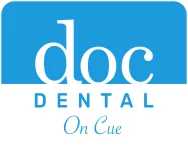Local Anaesthesia – Kew, Melbourne, VIC
Sometimes dentists need to do more in-depth work than your regular cleans and exams. Due to the sensitivity of your teeth and gums, some treatment may require local anaesthetic medication to cause numbness.
You may have heard of dentists using Novocain to numb patients’ mouths, but Novocain is not actually used anymore. Modern dentists use much safer and more effective drugs such as lidocaine. These are usually combined with other substances such as vasoconstrictors to increase the effectiveness and duration of the anaesthesia.
There are two kinds of local anaesthetics that dentists use to numb your mouth. The first is called a topical anaesthetic, which is swabbed over a small area on the surface of your mouth or gums. In most cases, this is used to numb the area where the dentist plans to inject the other kind of local anaesthetic. The injectable anaesthetic is what we rely on to keep you comfortable and pain-free.
What Is Local Anaesthesia?
Local anaesthesia is used to make a very small, specific area of your body temporarily unable to feel sensations, including pain. Examples of procedures requiring local anaesthesia include fillings, crown placement and root canals.
A local anaesthetic works by blocking nerve cells in a specific area from sending pain signals to your brain. You can expect this numbness to last for two to four hours, which means you will probably still feel residual numbness after your appointment.
Before you undergo a procedure requiring local anaesthesia, we will ask for information regarding any allergies and the medications you take. There is a possibility you might need a different formula if you have certain medical conditions. Call us if you have concerns or wish to know more about how we use local anaesthesia.
What To Expect
Despite the numbness from the topical anaesthetic, some patients feel a stinging sensation from the injection and think it isn’t working. In reality, this feeling is caused by the anaesthetic drug entering the body and beginning to work. The stinging subsides within several seconds.
Side Effects
Local anaesthesia does have side effects, but they are usually not serious. One well-known side effect is a temporary rapid heartbeat, which can happen if the local anaesthetic is injected into a blood vessel. One of the chemicals used in the local anaesthetic injection, epinephrine, can travel directly from the blood vessel to the heart. You may also know epinephrine by its other name: adrenaline. It is a naturally occurring substance in your body that can rapidly increase your heart rate. The fast heartbeat it causes can be alarming, but it is not dangerous and should return to normal in a matter of seconds.
Numbness
The numbness from local anaesthesia will take a couple hours to wear off, which may inhibit proper speaking and eating. After your appointment, you’ll need to be careful about biting and chewing—you could bite your tongue or cheek and not feel it! You may also experience temporary swelling or drooping of parts of your mouth or face. Some patients find themselves unable to blink, though this is not something to worry about. The dentist can tape your eye shut so it won’t dry out. You’ll be able to blink normally again as soon as the anaesthetic wears off.
